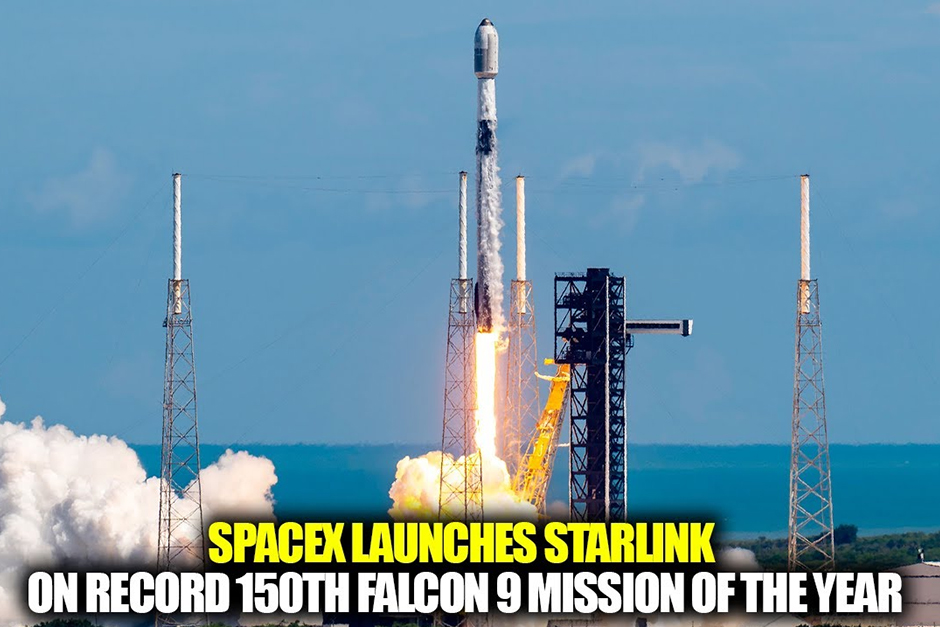In the vast, increasingly busy theater of orbital mechanics, a quiet but monumental drama is unfolding. SpaceX’s Falcon 9 rocket just etched another incredible mark into the annals of space history, completing its 150th mission this year. One hundred and fifty. It’s a number that, even a decade ago, would have sounded like something plucked from a science fiction novel, an impossible feat of engineering and operational agility. Yet, here we are, witnessing an unprecedented cadence of launches, primarily dedicated to weaving the intricate tapestry of the Starlink satellite constellation.
This isn’t just about breaking records; it’s about fundamentally reshaping our relationship with space, from how we access it to what we can achieve once we’re there. The continuous hum of Falcon 9 missions, each carrying dozens of Starlink satellites, is more than just a logistical marvel; it’s a powerful statement about human ingenuity and the relentless pursuit of connectivity.
The New Normal: Reliability at Warp Speed
The sheer frequency of Falcon 9 launches is, by itself, a staggering accomplishment. To put 150 missions into perspective: many national space agencies, over decades, haven’t achieved such a launch rate. This isn’t just about quantity, however. It’s about the relentless pursuit of reliability and efficiency that makes such a cadence possible. The Falcon 9, with its gracefully returning first stage, has become the workhorse of a new space age, transforming what was once a bespoke, multi-year process into something approaching routine.
Each launch, while becoming a more frequent occurrence, remains a complex ballet of engineering, precise calculations, and meticulous preparation. The ability to turn around boosters, refurbish them, and send them skyward again in increasingly shorter intervals is the true innovation driving this new normal. It’s a testament to iterative design, robust manufacturing, and an operational tempo that simply didn’t exist before. This isn’t just faster; it’s fundamentally different, democratizing access to orbit and accelerating the pace of innovation across the entire space sector.
Weaving a Global Web: The Starlink Revolution
While the Falcon 9 is the vehicle, the payload of choice for a significant portion of these missions – Starlink satellites – represents the destination. Each successful launch adds more nodes to an ever-growing network designed to provide high-speed, low-latency internet access across the globe. This isn’t just a convenience for those with existing options; for millions, it’s a lifeline, a bridge across the digital divide that has long separated urban centers from rural and remote communities.
Imagine a tiny village in the Amazon rainforest suddenly able to access tele-medicine, or a remote school in the Arctic connecting to educational resources worldwide. These are no longer futuristic dreams but current realities, enabled by the continuous deployment of Starlink. “Before Starlink, reliable internet was a pipe dream where I live. Now, it’s just… normal. It’s truly transformative for my business and my kids’ education,” remarked a remote worker we spoke with from an isolated mountain community, perfectly encapsulating the service’s impact.
The ambition of Starlink isn’t merely about internet access; it’s about fostering global equity, enabling new forms of communication, and supporting disaster relief efforts where traditional infrastructure has failed. It’s about connecting humanity in ways previously unimaginable, pushing the boundaries of what’s possible from low Earth orbit.
As the Falcon 9 completes its 150th mission this year, launching yet more Starlink satellites, it’s not just a statistic. It’s a vivid illustration of a future rapidly unfolding before our eyes. It speaks to a relentless drive, a boundless ambition, and a future where access to space and global connectivity are no longer privileges, but increasingly, fundamental pillars of our interconnected world. The skies are getting busier, and humanity’s reach is extending further than ever before, one mission, one satellite, at a time.




